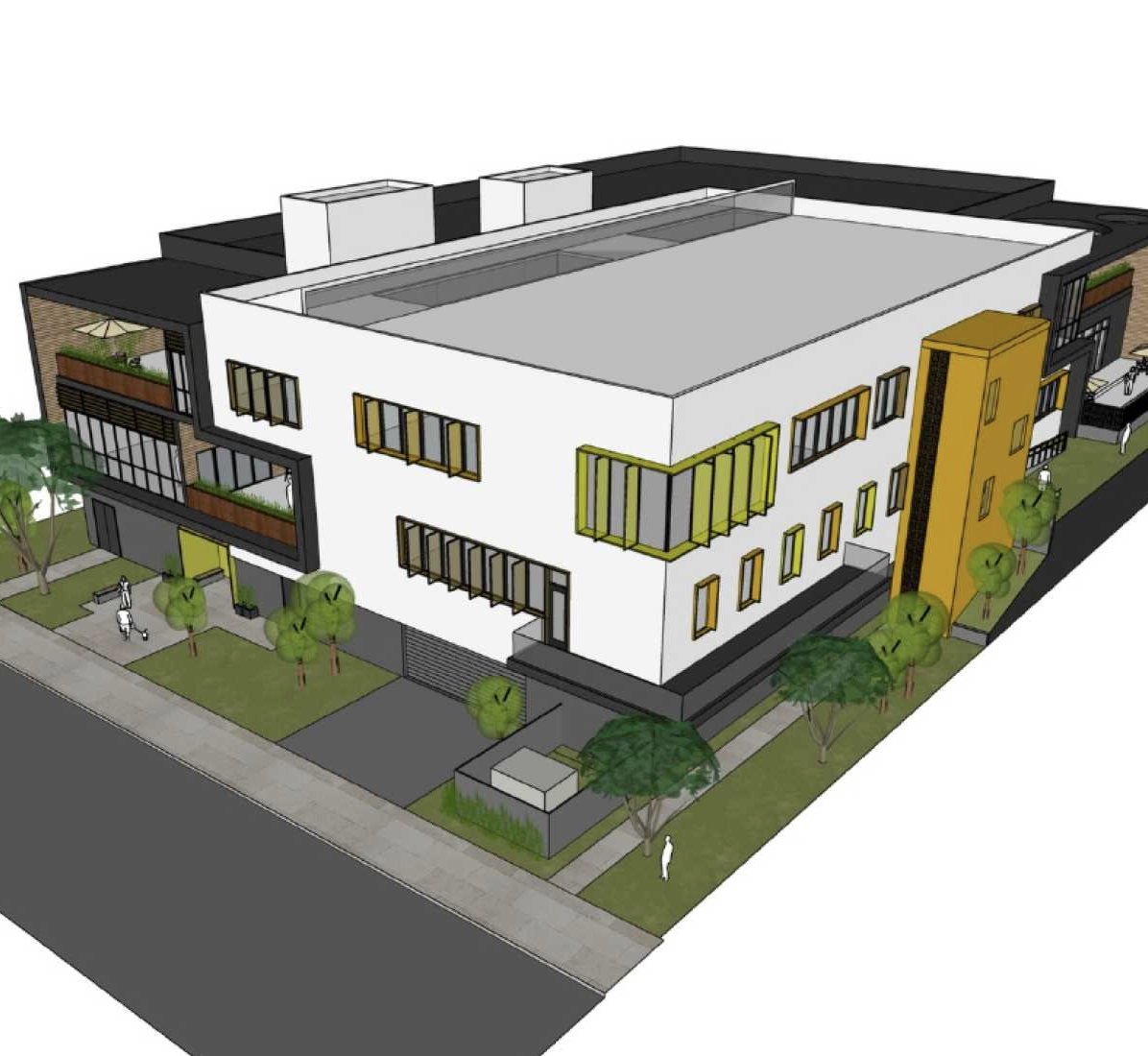LA County is moving forward with plans to build a new 167-bed homeless housing facility at the West L.A. Armory on Federal Avenue, replacing the winter shelter that quietly operated there for more than a decade. The three-story project, backed by Supervisor Lindsey Horvath, would provide 24-hour staffing, case management, and on-site health and counseling services, along with private sleeping cubicles, pet areas, and storage for personal belongings. The same site previously hosted a 160-bed mixed-gender winter shelter operated by LAHSA and the National Guard for more than ten years without public safety incidents.
The plan has become the target of a coordinated campaign led by former television journalist John Schwada, who authored an article and petition alleging that the county “concealed” its intentions and that the project will bring crime, drugs, and chaos to the neighborhood. The petition, now circulating on Nextdoor and Change.org, accuses Horvath and county officials of “hoodwinking the public” and claims the site violates a historic land covenant meant to serve military veterans.
County documents and independent records contradict many of those claims. According to the 2022 environmental exemption prepared by Sirius Environmental for Los Angeles County, the Armory site is owned by the federal government and leased through the California Department of General Services, not the U.S. Department of Veterans Affairs. This means the Armory property is legally distinct from the nearby VA campus, which is governed by the Bandini-Jones covenant requiring land there to be used solely for the benefit of military veterans. The Armory site is not subject to that restriction and therefore is not limited to veteran-only use.
The county’s environmental review also shows that the project is exempt from the California Environmental Quality Act under several provisions, including the state’s “Low Barrier Navigation Center” statute and emergency provisions related to homelessness. Under state law, navigation centers are considered “uses by right” in nonresidential zones and cannot be blocked through local zoning appeals. The exemption cites the county’s ongoing shelter crisis declaration and the steep rise in homeless deaths, which climbed from 630 in 2014 to 1,776 in 2020.
The new facility would include secure access, solid walls on the north and east sides facing the Armory, 24-hour staffing, and designated pickup and drop-off sites rather than walk-in entry. It would continue the model used at the winter shelter, which transported residents by bus from pre-approved locations each evening.
Despite this, opposition groups have framed the project as a threat to neighborhood safety. Schwada’s opinion piece describes “drug addicts, petty criminals and alcoholics” roaming the area and cites incidents from unrelated shelter programs in Venice and Los Feliz. Experts have disputed those claims. Research consistently shows no evidence that supportive housing projects cause local crime increases, and LAPD statistics have not found correlations between bridge housing sites and neighborhood safety issues.
Westside housing advocates expressed confusion and frustration about the wave of misinformation. Supporters point out that the site is not on VA land, but rather federal property leased through the state and therefore legally distinct. They note that the Armory project is part of a countywide effort to expand shelter capacity on the Westside, which has among the lowest numbers of beds per capita in Los Angeles County. The facility will be operated year-round, unlike the seasonal winter shelter it replaces, and is intended to move residents rapidly into permanent housing through the county’s coordinated entry system.
Critics have demanded that the facility be restricted to veterans or reduced to fewer than 50 beds, but county officials say the site is designed to serve the broader unhoused population, including veterans, women, and couples. The facility will include separate areas for women, men, and couples, as well as outdoor patios, laundry rooms, and recreation spaces.
The dispute over the Armory project reflects a familiar pattern in LA housing debates, in which misinformation and fear spread faster than facts. County officials have described homelessness as a public health emergency requiring swift action. With deaths among unhoused people reaching record levels and encampments proliferating across the Westside, advocates argue that blocking the project would prolong the very conditions opponents claim to fear. The county has not yet announced a construction start date but anticipates an approximately 16-month build once permits are finalized.

